Montana Launched New Wildland Fire Restrictions Website
June 29, 2021
The Northern Rockies Coordination Group (NRCG) and collaborating federal, state, and local agencies are launching a new website to keep Montanans and our visitors updated on current fire restriction information.
“We have a personal responsibility to each another and our communities to take measures to prevent wildfire starts,” Governor Gianforte said. “We have several counties already in Stage 1 and Stage 2 Fire Restrictions, and this website is a great tool for Montanans to stay informed and protect their loved ones.”
The new website hosts a geospatial map that depicts the specific fire restrictions order or proclamation for each federal, state, tribal, and local jurisdiction in Montana. Stage 1 and Stage 2 Fire Restrictions are designed to limit human-caused activities that commonly start wildfires, such as campfires, smoking, or other activities that generate sparks.
“Every Montanan is impacted by longer, more severe wildfire seasons,” said Amanda Kaster, DNRC Director. “Because we are all impacted by wildfire, we are all also responsible for proactively preparing and equipping our communities to reduce wildfire risk and mitigate its potential impacts.” Visit the website HERE.
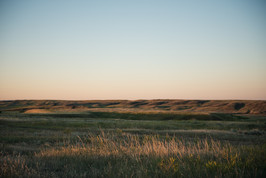
Montana Range Tour
September 8th & 9th, 2021 Malta
The Montana Range Tour September 8th & 9th will not disappoint. The Phillips Conservation District and partners have put together an amazing agenda, which includes E-Collars-Virtual grazing, dung beetles, drones, conservation projects, and keynote speaker, Dr. Dave Naugle. The 2021 Leopold Conservation Award Winner will also be announced the evening of the 8th. Cost is $70 for the 2 days and details can be found at 2021 Montana Range Tour.
|

Weather Insights
July 26, 2021
The July 2021 outlook from NOAA’s Climate Prediction Center favors a much warmer than average July for the Western states and drier-than-average conditions for the Northern Plains leading to dangerous drought and wildfire conditions.
- Heat continues to spread east through Idaho, Montana, and the Canadian Prairie.
- Western wildfires are resulting in smoke moving all across the country
Also, in this week’s weather video, atmospheric scientist Eric Snodgrass provides an outlook for weather patterns from mid-July to mid-Aug.
|
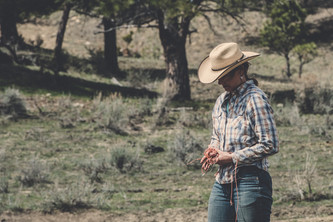 |

WWF Ranch Systems and Viability Planning
Through their new Ranch Systems and Viability Planning (RSVP) program, World Wildlife Fund (WWF) is establishing a comprehensive offering for ranch support and grassland conservation in the Northern Great Plains of Montana. A part of the WWF Sustainable Ranching Initiative (SRI), RSVP focuses on fostering peer-learning opportunities for ranchers to learn from one-another, and helps livestock producers develop and reach their own conservation goals. For those interested in learning about and adopting sustainable grazing practices, WWF provides educational, technical, and financial assistance. Ranchers can participate in two ways: by attending events, ranching workshops, or online education hosted by WWF and partners, or by formally enrolling their ranches in the RSVP program. In 2021, over 250,000 acres of rangeland in Montana have enrolled into RSVP, and WWF is working with those ranchers to provide continuing education, ranch-wide ecological monitoring, and infrastructure improvements specific to each ranch’s needs and goals. Examples of ranch improvements include grassland restoration, temporary water and fencing solutions, virtual fencing, and solar-powered well installations. Through RSVP, WWF has also sponsored such educational programs as Ranching for Profit, the Nicole Masters Soil Health Tour, and Enhancing Your Livestock Operation: Surviving in a World of Change (with Fred Provenza and Allen Williams). To learn more about RSVP and SRI, contact Aaron Clausen - SRI Montana Specialist (aaron.clausen@wwfus.org), or Alexis Bonogofsky - SRI Program Manager (alexis.bonogofsky@wwfus.org).
|
 |
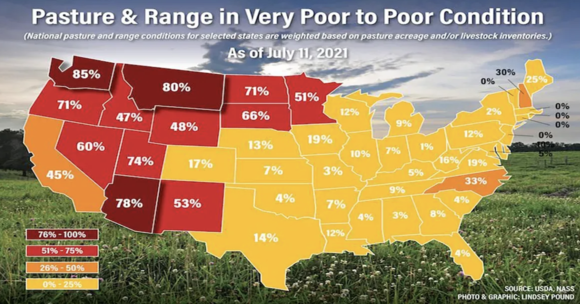
Drought Taking It's Toll on Pasture and Range Conditions
July 19, 2021
As farmers and ranchers in the West experience record-breaking heat, the continued extreme drought conditions are also taking a toll on growers, crops and livestock. That's as pasture and range conditions continue to suffer with little to no water relief.
USDA's weekly look at conditions shows pasture and range conditions in the majority of states in the West have more than half of their pastures and ranges in poor to very poor condition, the worst two condition ratings USDA lists.
USDA recently announced it would allow emergency haying and grazing on CRP acres for producers in dire drought situations. American Farm Bureau says more than 1,000 counties qualify.
According to USDA, producers located in a county that is designated as D2 or greater before or after the last day of the primary nesting season qualify for emergency haying and grazing on all eligible acres.
For more information about other drought-related programs available, please contact your local Farm Service Agency office or visit www.farmers.gov.
View full article here.
|
USDA Offers Disaster Assistance to Montana Farmers and Livestock Producers Impacted by Drought
July 15, 2021
Montana agricultural operations have been significantly impacted by the ongoing, severe drought. The U.S. Department of Agriculture (USDA) has technical and financial assistance available to help farmers and livestock producers recover. As agricultural producers move into recovery mode and assess damages, they should contact their local USDA Service Center to report losses and learn more about program options available to assist in their recovery from crop, land, infrastructure and livestock losses and damages.
“Unfortunately, conditions continue to deteriorate across Montana with more than half of the state experiencing severe to extreme drought,” said Gloria Montaño Greene as Deputy Under Secretary for Farm Production and Conservation (FPAC). “I am thankful that USDA can step in with disaster assistance programs designed to alleviate some of the financial impact experienced by agricultural producers suffering drought losses.”
Click HERE to read the full article and learn about the disaster assistance programs available to you.
Comparison of plant-based meat and grass-fed meat indicates large nutritional differences despite comparable Nutrition Facts panels
July 5, 2021
A new generation of plant-based meat alternatives—formulated to mimic the taste and nutritional composition of red meat—have attracted considerable consumer interest, research attention, and media coverage. This has raised questions of whether plant-based meat alternatives represent proper nutritional replacements to animal meat. The goal of this study was to use untargeted metabolomics to provide an in-depth comparison of the metabolite profiles a popular plant-based meat alternative and grass-fed ground beef matched for serving size and fat content. Despite apparent similarities based on Nutrition Facts panels, this metabolomics analysis found that metabolite abundances between the plant-based meat alternative and grass-fed ground beef differed by 90%.
Large differences in metabolites within various nutrient classes indicate that these products should not be viewed as truly nutritionally interchangeable, but could be viewed as complementary in terms of provided nutrients. The new information this provides is important for making informed decisions by consumers and health professionals.
View full article here.
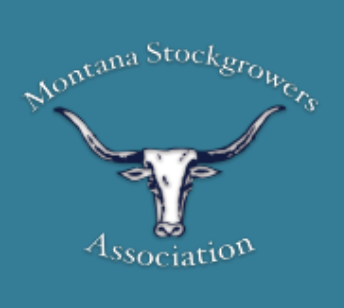
Montana Stock Growers Association Weekly Update
Latest news for the week of July 12, 2021
MSGA launches Drought Hub for producers, BLM grazing decision on APR grazing draws media attention, and make plans to attend the TBone Gala and Golf Tournament.
Drought Hub - MSGA is committed to keeping members up-to-date on drought related information and resources. As you work to find solutions during this challenging time, resources and information will be posted on the newly-launched Drought Hub as they become available.
BLM Grazing Decision on APR - Check out MSGA's latest interview with Voices of Montana regarding the recent release of the Bureau of Land Management’s (BLM) draft environmental assessment (EA) and Finding of No Significant Impact (FONSI). MSGA will continue to advocate on behalf of the ranchers of Montana during the comment, protest and appeal periods of the BLM decision.
View the full update HERE.
|
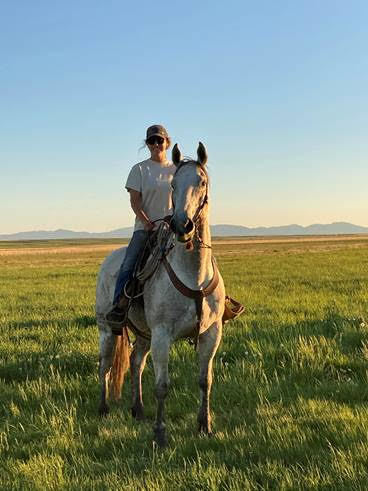
Working Lands Internship Program Reflection
By: Miranda Protzen
My name is Miranda Protzen, I graduated this past spring from Montana State University with a Range Science degree. This internship has given me the opportunity to work alongside and learn directly from ranchers all over the state. I have been able to gain hands-on experience with various aspects of ranching and learn about natural resource management from those who are passionate about implementing conservation practices. Through the Working Lands Internship Program, I have met and connected with many people from management agencies and conservation organizations and have attended various events such as Rancher Stewardship Alliance and Winnett ACES meetings, the 406 Grazing Academy and the Leopold Conservation Award ranch tour.
I have acquired countless new skills and knowledge so far this summer, however one that I didn’t expect to learn is how to skin a lamb (see image below). While working at the Halverson Ranch in Big Timber, I skinned two lambs and placed two bum lambs into the hides. The mother ewes immediately accepted the bum lambs as their own to nurse, which was very satisfying accomplishment.
As for what’s next, I look forward to starting with NRCS in Lewistown as a soil conservationist in September!
|
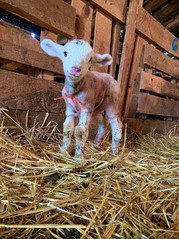 |
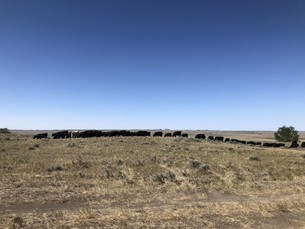
DNRC Rangeland Resources Program Intern Reflection
By: Gillian Rowe
Throughout my first month as a Montana Conservation Corps Fellow, I have learned a lot working with both the Department of Natural Resources and Conservation (DNRC), Rangeland Resources Program and the Gallatin Conservation District. With the DNRC I have had the opportunity to assist in creating the monthly newsletter, create booklets for future programs, and hear first-hand from ranchers about their experiences managing their land and livestock. First, I participated in a ranch tour of one of the Leopold conservation award finalists. Here I learned about how local Montana ranchers can run their property for successful production today and in the future. I was also fortunate to be able to attend the “Enhancing your Livestock Operation: Surviving in a World of Change” ranching workshop in Baker, MT where I learned about the complexities of regenerative and adaptive ranching through expert presentations and live demonstrations (see image). These experiences so far have opened my eyes to the world of rangeland management in the state of Montana and how decisions being made at all levels both within and outside of the state can affect the livelihoods and production capabilities of Montana’s Ranchers.
With the Gallatin Conservation District (GCD), I have been able to hear more from other Montana stakeholder groups. Throughout the past month I’ve been exposed to the diverse work the conservation district is charged with. First being the importance of 310 permits when completing projects near water ways in Montana. I’ve also had the chance to work on our monthly Gallatin Water Supply Outlook Report that updates residents on the state of Montana’s water supply. I have sat in on multiple board meetings where I hear about the ins and outs of the conservation district and all the important decisions that need to be made to keep it running efficiently. I’ve met local residents and vendors at the Manhattan Farmers market where I work to promote the GCD and the diverse programs we offer. I am also responsible for all social media platforms at the conservation district where I promote our programs and initiatives such as Summer Stewards, the Farmers Market and National Pollinator week. Our Summer Stewards program has allowed me to meet with local kids and their families and teach them more about various conservation topics. I’ve learned just how curious kids can be through hands-on learning outside in the garden. Finally, I have taken the lead on our Pollinator initiative where I work with local landowners to create their own pollinator habitat to support pollinator health and well-being.
The DNRC and GCD have kept me busy during my first month in the program by exposing me to all aspects of both organizations and the incredible work they do as well as giving me insight into a Montana’s local perspective.
|
Montana Range Days Hall of Fame Award Winner for 2020
Rick Caquelin from Stanford, Montana was awarded the Montana Range Days Hall of Fame Award for 2020 during the annual banquet on Tuesday evening, June 22, 2021 in Dillon, Montana. The award was not presented in 2020 because Montana Range Days was not held in 2020 due to the COVID pandemic.
Rick was a Rangeland Management Specialist and District Conservationist for the USDA Natural Resources Conservation Service who just recently retired at the end of 2020 after 30+ years of service.
He has emphasized education for youth and adults over his entire career. He is well respected by his peers in the range profession and always brings enthusiasm, wisdom, practical knowledge and a positive attitude to a variety of subjects including plant identification, grazing management, conservation planning, range ecology, range monitoring, grass growth/development, cattle nutrition and forage quality (to name a few). Over Rick’s lengthy career he was a mainstay at Montana Range Days and at the Montana Youth Range Camp.
Rick initiated the monitoring program and a forage quality program while he was the District Conservationist in the Stanford Field Office. He had 20-25 ranchers over approximately a 15-year period who implemented studies on their ranch with Rick’s help each year.
Rick has developed quality conservation plans for ranchers and farmers over his career in a variety of programs. This would include hundreds of thousands of acres that were positively affected by Rick’s efforts working with individual landowners. He is always sharing his monitoring and grazing management results with other ranchers and range professionals. He will continue to ranch and do some consulting work during his retirement years. Rick’s professionalism, enthusiasm and attitude about range management and his ability to
communicate with young people and adults is unparalleled in his profession.
Congratulation Rick Caquelin!
So lush, so green, and oh so poisonous
Keith Johnson, Purdue Extension Forage Specialist July 7, 2021
Think twice before throwing certain plants in your pasture. Many plants have poisonous compounds that can cause all kinds of concerns, and even death, if consumed by cattle. See the whole article here.
September 2021
September 8th & 9th, Montana Range Tour- Malta
September 14th, Riparian Grazing Workshop- Helena
September 14-16, 2021 Soil Health Bus Tour 2021
September 15-17, Watershed Tour - Montana Watershed Coalition Council
Stacey Barta, State Coordinator for Rangelands
220 W. Lamme, Suite 1A
Bozeman, MT 59715
(406) 594-8481
SBarta@mt.gov
Rangeland Resources Committee:
Diane Ahlgren, Chair
John Hollenback, Vice Chair
Sigurd Jensen
Jim Anderson
Leah Lewis
Ron Devlin
|